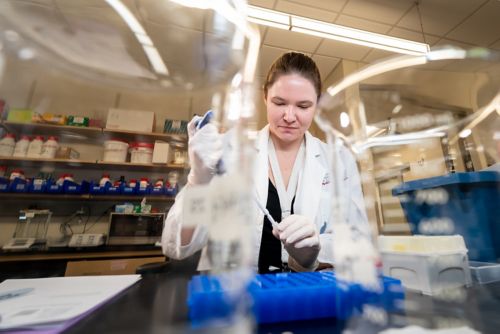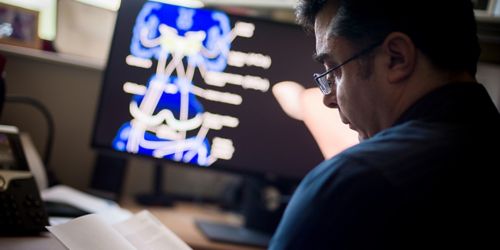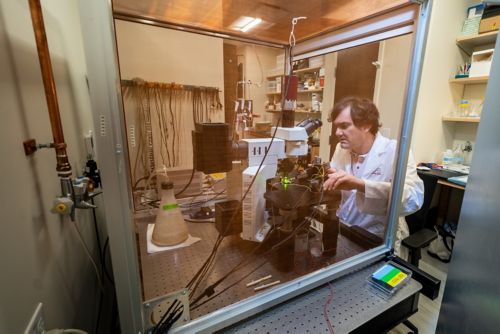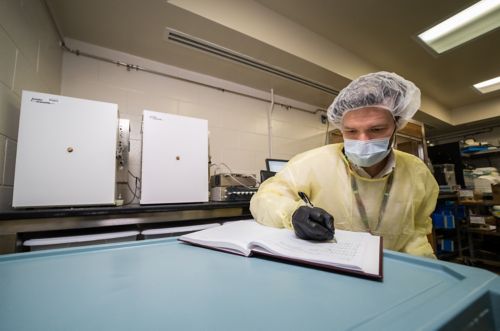St. Jude Family of Websites
Explore our cutting edge research, world-class patient care, career opportunities and more.
St. Jude Children's Research Hospital Home

- Fundraising
St. Jude Family of Websites
Explore our cutting edge research, world-class patient care, career opportunities and more.
St. Jude Children's Research Hospital Home

- Fundraising
Stanislav Zakharenko Lab
Investigating the neural circuits, synaptic function, and molecular mechanisms controlling learning and memory and their dysfunction in neuropsychiatric disease
About the Zakharenko Lab
Neural circuits encode normal behavior and undergo changes in organization and function throughout development. When these circuits become dysfunctional, they contribute to neurological and psychiatric disease. Our laboratory focuses on gaining a mechanistic understanding of behavior and disease at the level of neural circuits, individual neuron synapses, and molecules. We use advanced optical, electrophysiological, molecular, and genomic studies in animal models and human organoids to gain in-depth knowledge of the central nervous system. We are currently investigating the mechanisms of the 22q11.2 deletion syndrome, which confers one of the strongest risks of schizophrenia, and mechanisms of Williams–Beuren syndrome. Ultimately, our work will help define the underpinnings of neuropsychiatric disorders.

In the news

-
Zakharenko awarded grant for mental health research
Brain & Behavior Research Foundation 2025 Distinguished Investigator Grant will support Zakharenko Lab's research into auditory hallucinations.
Our research summary
Auditory Learning and Memory
For young children, learning new auditory information (e.g., a new language or music) is often an effortless task. However, there is a developmental progression of difficulty that occurs as we age. This added hurdle is created by changes in the plasticity of our auditory neural circuits. The central auditory system (including the thalamus and cortex) exhibits electrophysiological signatures that show changes in synaptic plasticity (such as long-term potentiation and long-term depression) in the thalamocortical circuity. We are interested in understanding why this early critical period for auditory learning becomes closed and identifying the mechanisms that preclude us from effortlessly acquiring new auditory information later in life.

Genetic Models of Neuropsychiatric Disease
Our mechanistic understanding of schizophrenia has not considerably improved, mostly because schizophrenia is a polygenic, multicausal disease that is difficult to model. We are exploring the 22q11.2 deletion syndrome (22q11DS) and other rare copy number variations that present the highest genetic risk for development of schizophrenia and are possible to model in animals and human organoids. Our goal is to identify the mechanisms that will better our understanding of this enigmatic disease.

The ability to distinguish one sound from another or from the surrounding acoustic background is essential for everyday hearing, linguistic abilities, and musicality. Williams-Beuren syndrome (WBS) is of interest to auditory researchers, because despite developmental delays in physical and intellectual abilities, individuals with WBS show strengths in linguistic and/or musical skills, remarkable auditory acuity, and even surprising prevalence of “perfect pitch.” Elucidating the mechanisms underlying WBS may provide new insights on how the auditory system encodes our ability to identify and discriminate sounds.
Selected Publications
Contact us
Stanislav Zakharenko, MD, PhD
Member, St. Jude Faculty
Director, Division of Neural Circuits and Behavior
Developmental Neurobiology
MS 323
St. Jude Children's Research Hospital

Memphis, TN, 38105-3678 USA GET DIRECTIONS